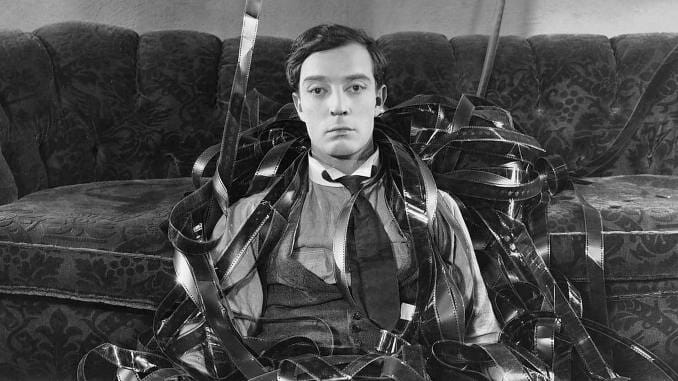Buster Keaton Is More Human than Camera Man in Dana Stevens’ Excellent Biography

Profile writing takes time, research, passion and patience, and most of all requires the profiler to coax their audience’s investment in their subject. Assuming equal interest in an historically important or at least entertaining individual among every reader is folly, so a good profile will waste no time making the case for caring no matter who’s turning the pages. In her new book, Camera Man: Buster Keaton, the Dawn of Cinema, and the Invention of the Twentieth Century, a chronicle of genuine human cannonball Joseph Frank “Buster” Keaton, tenured Slate critic Dana Stevens shows us she isn’t screwing around as early as page six by unpacking the year 1895.
It’s natural to picture the birth of Keaton, who spent so much of his career off of his feet that one might guess his background is part avian, as a meteoric event. Stevens puts his arrival on Earth in context with major cultural and social upheavals that shaped the end of the 19th century: The inventions of the wireless telegraph system and the “internal combustion powered automobile,” the rise of William Randolph Hearst’s grand media empire, the development of psychoanalysis, the “Atlanta compromise.” Listed alongside these happenings, Keaton appears smaller in stature—less significant in meaning, not the same kind of big screaming deal as seemingly everything else that transpired in 1895. In the midst of a great American transformation, Keaton barely registers on the radar.
Coming from another author, this would perhaps undercut the celebration of Keaton’s name by reducing it. Coming from Stevens, whose very Twitter handle derives from the name of Keaton’s first film made under the Buster Keaton Studio banner, parsing out Keaton’s beginnings in the shadow of great national change serves to brighten his star. To be born at such a time and still considered massively influential well over a century later is perhaps the height of achievement, especially when you’re born as far removed from the restructuring of your country’s mores and political architecture as Keaton was. Piqua, Kansas was the smallest of small towns in 1895, and as of 2022, it’s still incredibly damn small at a population of just 87. Given that Keaton, whom Stevens frequently refers to in fond familiarity simply as “Buster,” has already come and gone, the odds that we’ll see a talent like his emerge from the literal middle of nowhere again are roughly nil.
-

-

-

-

-

-

-

-

-

-

-

-

-

-

-

-

-

-

-

-

-

-

-

-

-

-

-

-

-

-

-

-

-

-

-

-

-

-

-

-








































